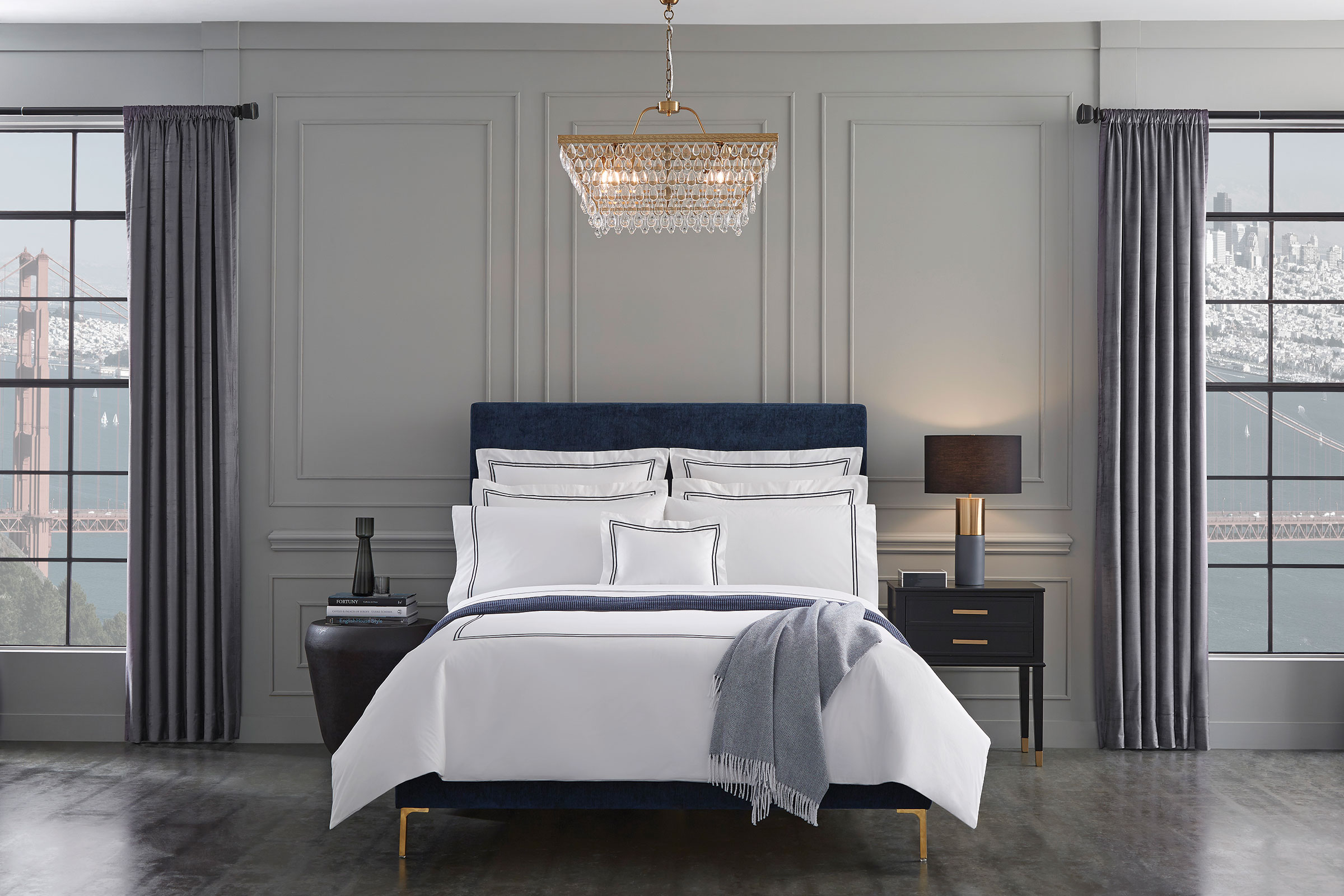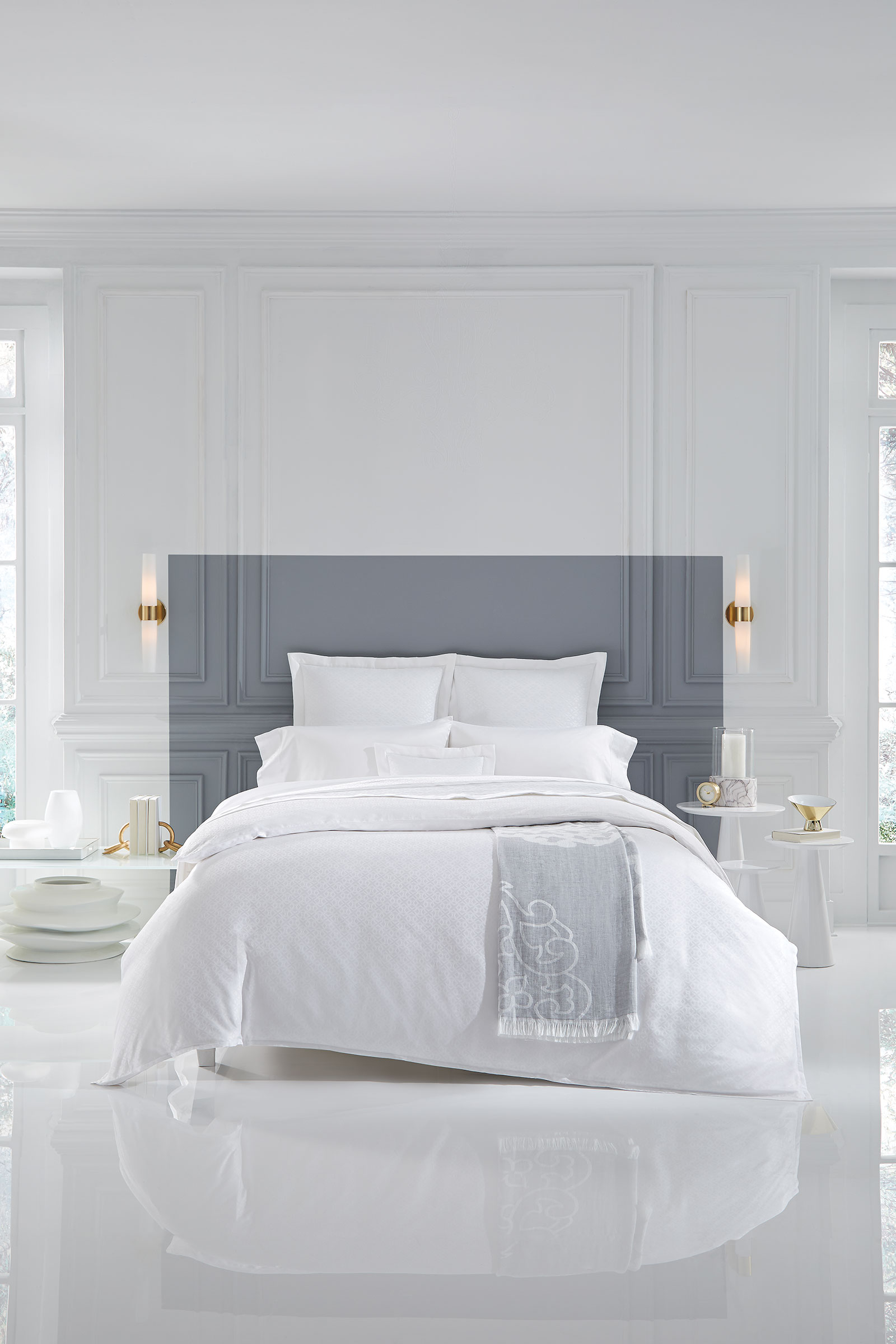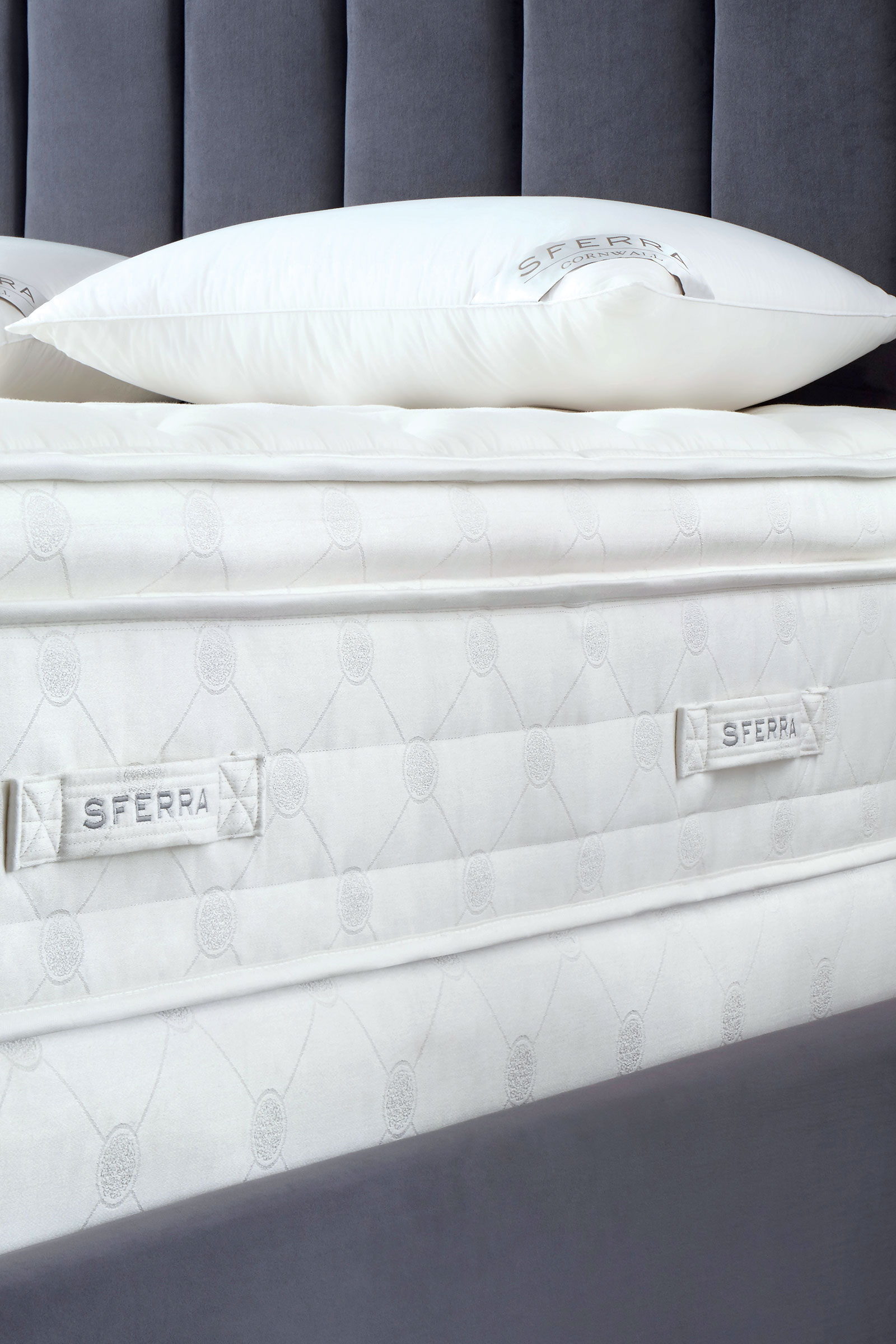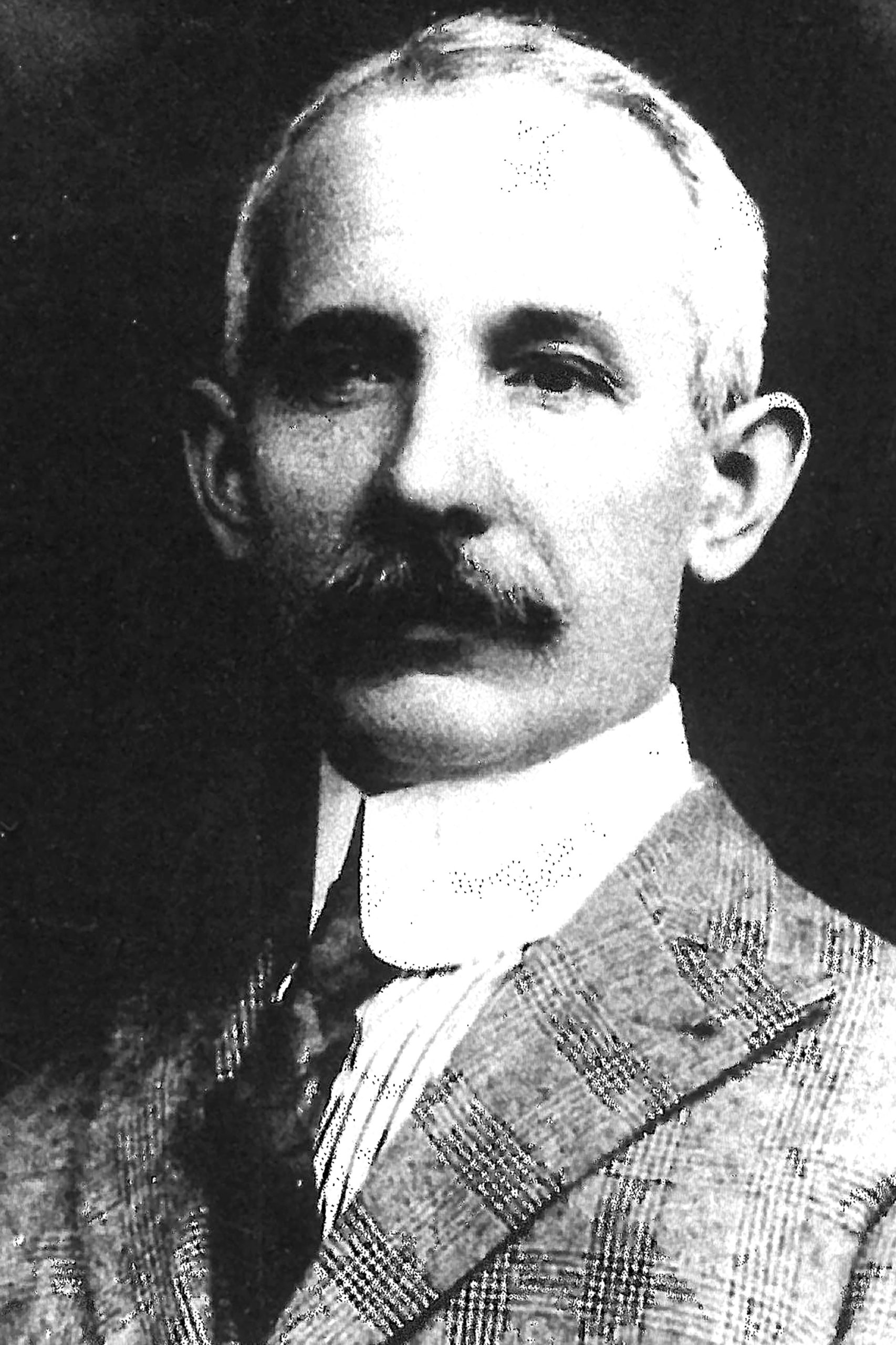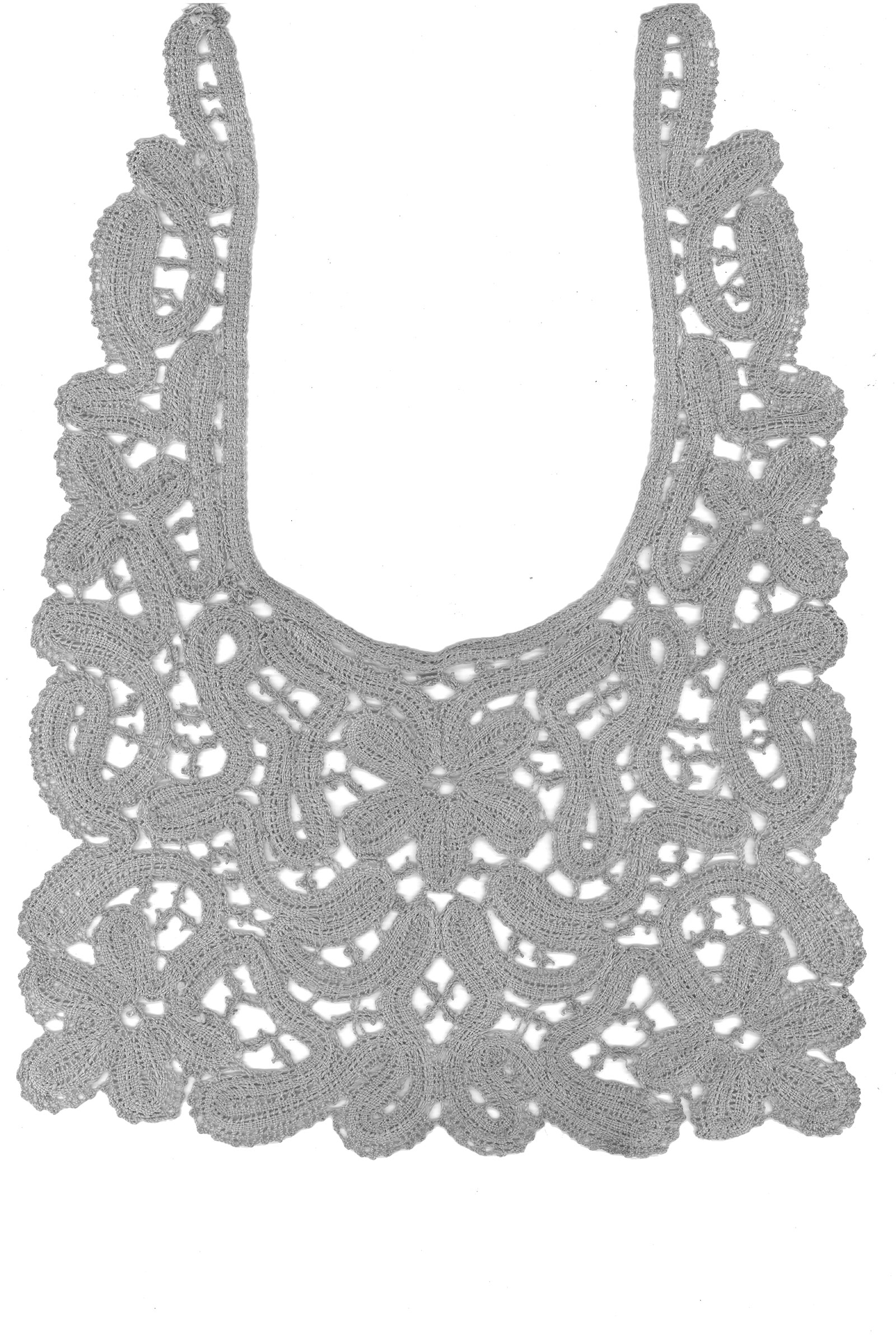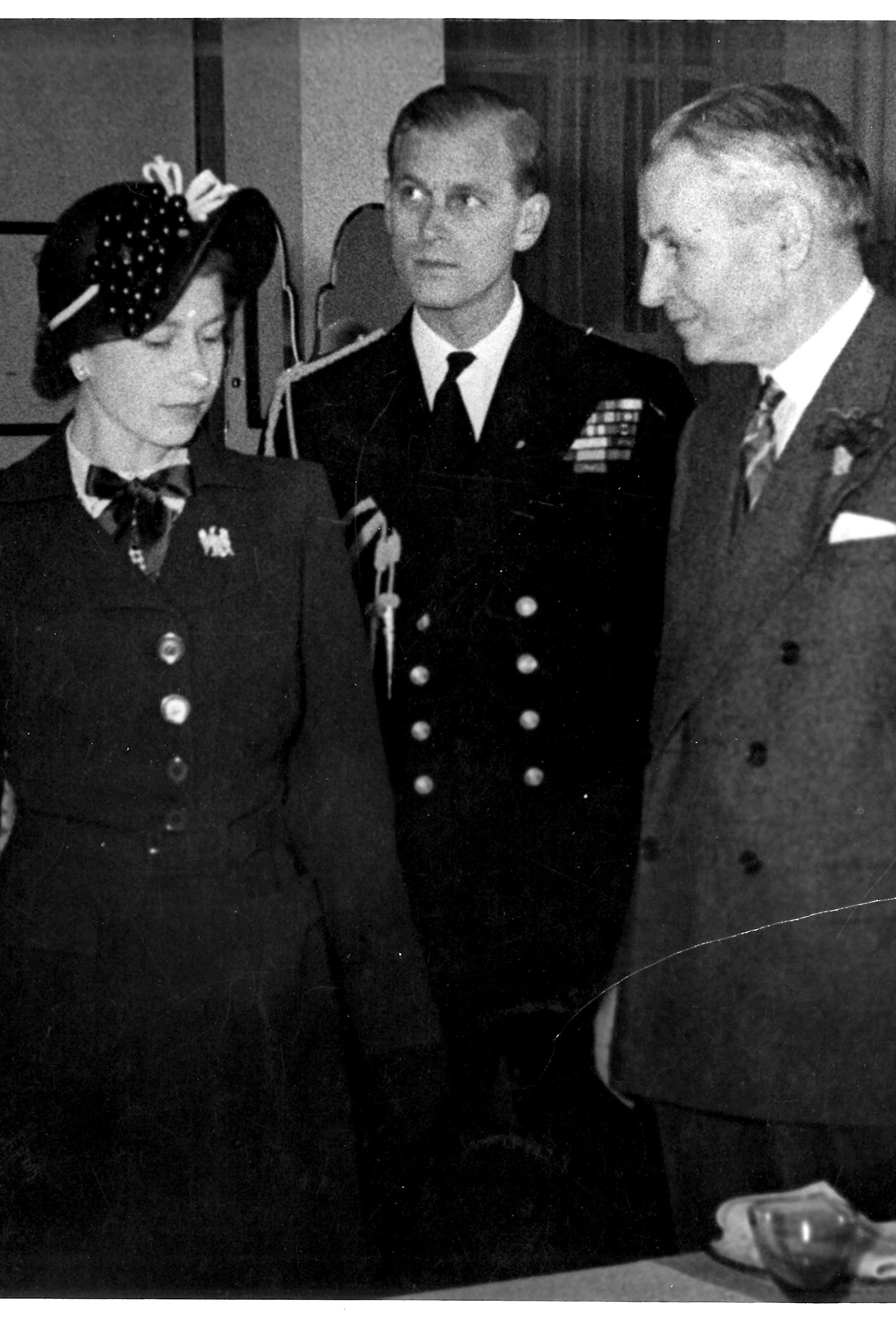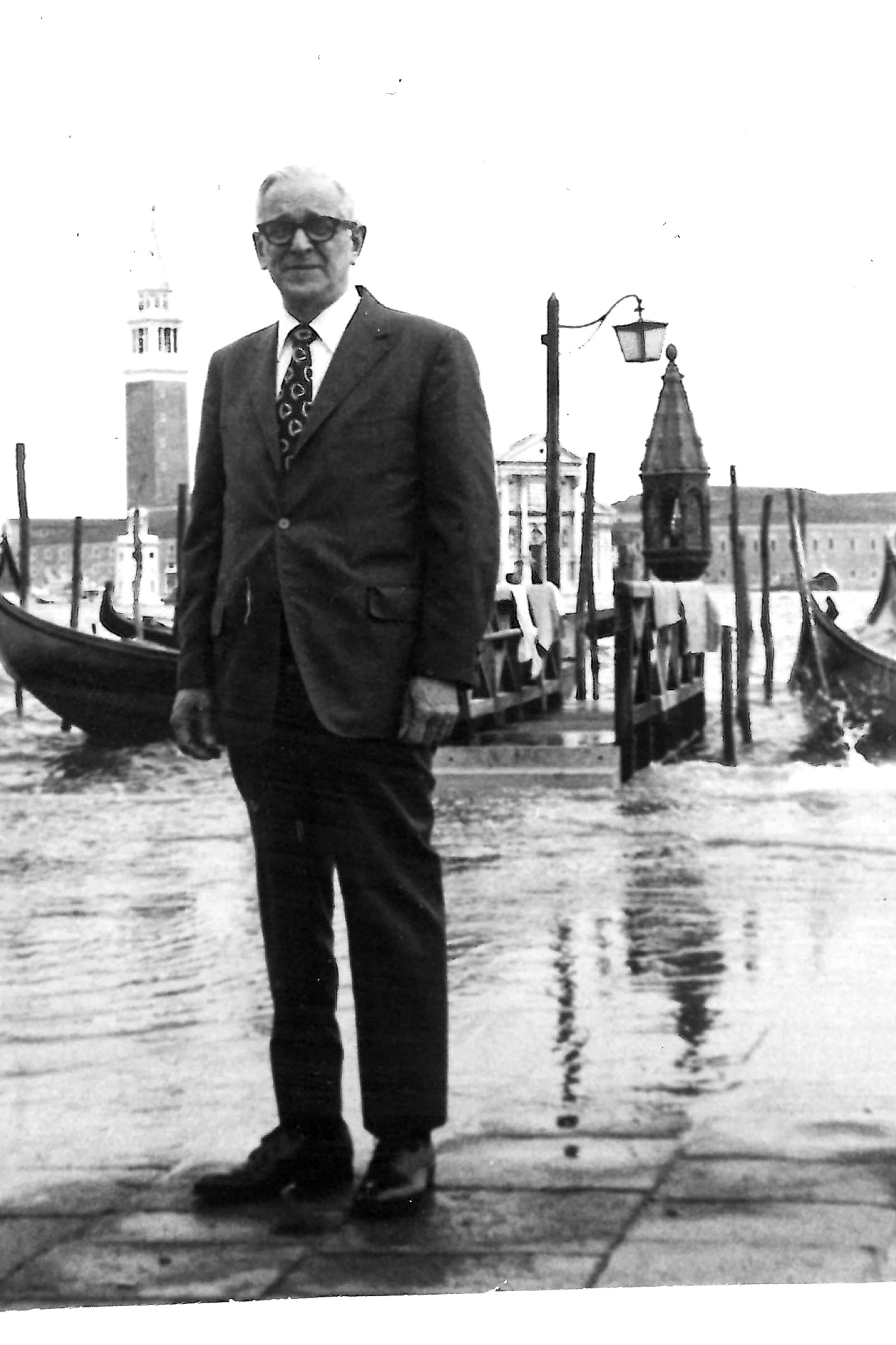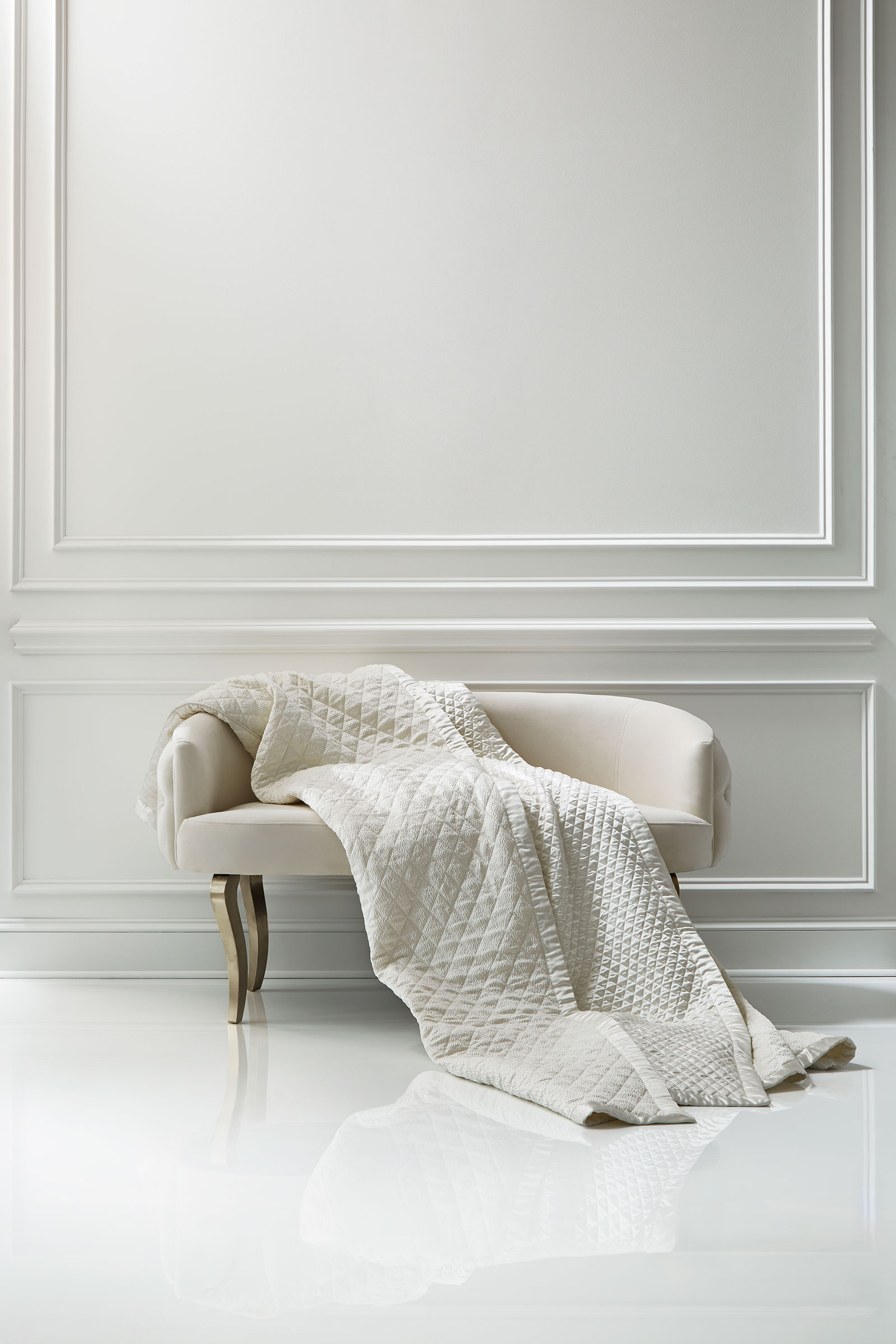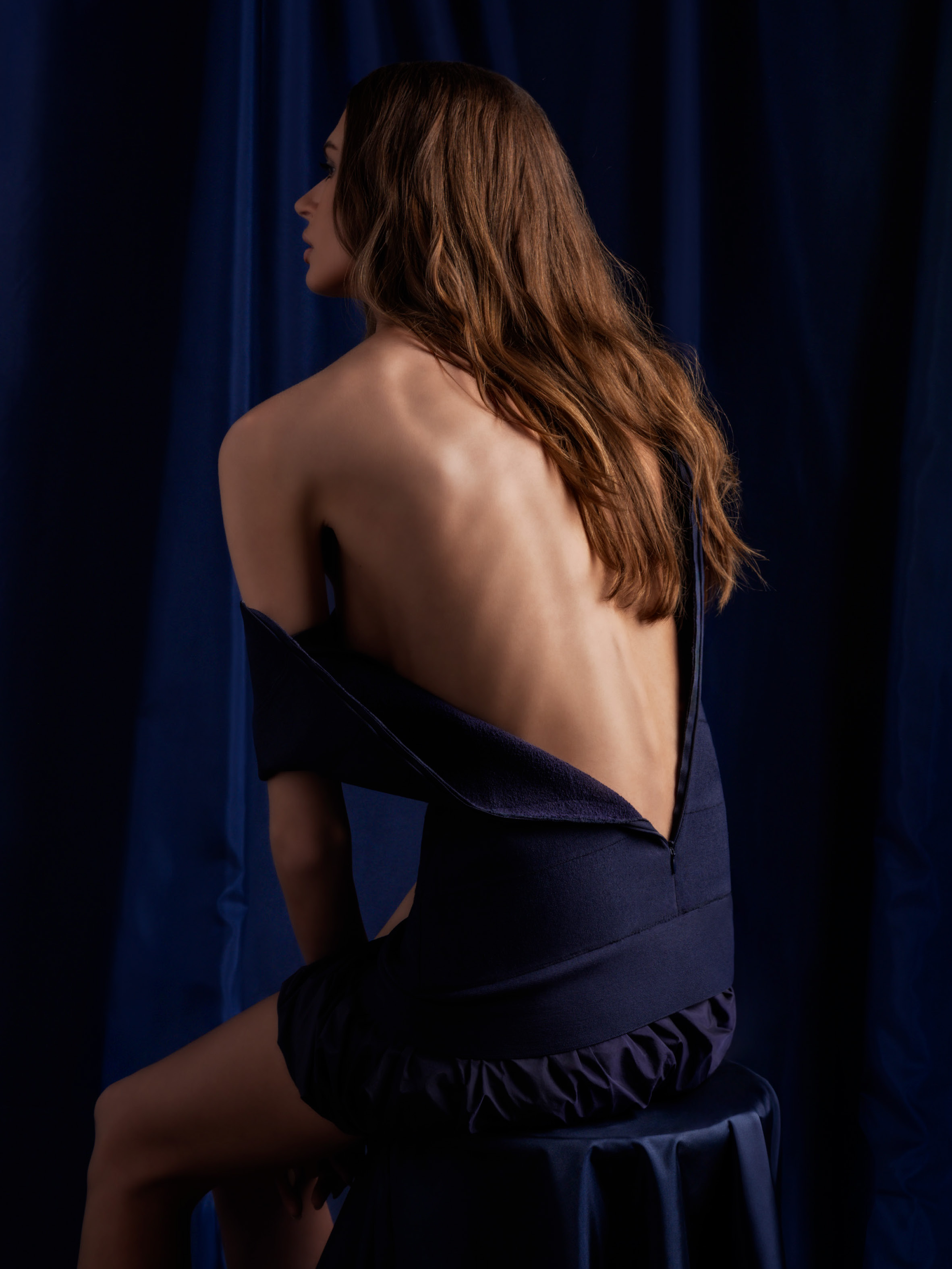In 1886 a 21-year-old Gennaro Sferra stepped onto American soil for the first time. Far away from his home in Isernia, Italy, Gennaro joined his two brothers, Filomeno and Pasquale, and together set off to build a fortune, not knowing their work would redefine the textile industry, from luxury bedding to linens.
Gennaro’s success was not immediate until, all of a sudden, it was: He worked at resorts along the eastern coast, traversing the edge of the country from Maine to Palm Beach, taking odd jobs and mingling with hotel patrons. The fashion of the day was laden with lace, especially for those who could afford stays at the retreats where Gennaro worked. Back home in Italy his mother sent handmade lace collars, cuffs, and trims—intricate, luxurious patterns to appeal to guests’ finer tastes—for Gennaro to sell. The delicate designs were a near-instantaneous triumph for Gennaro, so much so that he returned to Italy to secure inventory, and, together in 1891, he and his brothers founded Sferra Bros. Imports.
Fast-forward 129 years and Sferra Bros. Imports, now SFERRA, serves as the epitome of timeless craftsmanship, with trailblazing designs that are just as captivating today as those first few samples.
- The SFERRA Giza 45 Collection offers the finest bedding sheets, weaving together rare Egyptian Giza 45 yarns. Pictured here is the SFERRA Giza 45 Quatrefoil—a sateen Jacquard and the world’s finest Italian-woven Egyptian cotton.
- In 2019 SFERRA launched a successful line of mattresses. Handcrafted and made in the US, each mattress combines an advanced innerspring coil system with high-performance natural and foam materials, including 100% New Zealand wool and hand-tufted wool rosettes.
The Early Years
Although SFERRA has since become a luxury lifestyle brand, the foundation of its business was lace, and to keep business moving in the early 20th century Gennaro made two trips across the Atlantic each year to meet with the craftspeople hand-making each piece of intricate fabric. His roster of artisans was widespread, from the communes and convents in and around Venice to the mid-region of Italy near his hometown, all the way south near Bari. He supplied them with the thread, linen, sketches, designs, and anything else they needed for their needlework, and after each of his semiannual visits to Italy, returned home with a steamer trunk full of luxury linens ready to sell.
- SFERRA got its start in the late 1880s, when a young Gennaro Sferra traveled to the states from Italy to sell his mother’s handmade luxury lace items. The business has since evolved to include bed linens, table linens, and even mattresses.
- A huge archive of lace—including this Point de Venice lace collar—dating back to the late 19th century helps tell the story of SFERRA, which started as an artisan lacemaker.
But by 1905 the demand for such carefully crafted pieces was more than Gennaro’s craftspeople could produce. He needed more product, more artisans. So he opened a lace atelier school and factory steps from Venice’s famed Rialto Bridge, where he could train craftspeople in the art of lace and have them produce it, too. At its height, more than 100 daily workers cultivated the Italian style of lace-making—stitching, checking, washing, and pressing each piece individually.
And so the business forged on, now stocked with inventory to meet their clients’ fashion senses. Over time Gennaro’s brothers left SFERRA, leaving Gennaro as the sole owner. In 1920 his son Enrico, just 15, began venturing to Italy on Gennaro’s annual trips, learning the lace-making traditions at the core of their work. When Gennaro died in 1925, Enrico and his brother Albert inherited SFERRA and, with it, the chance to transform and grow their father’s legacy.
A New Phase
In the late 1920s and ’30s, lace fell out of fashion. The collars and cuffs so carefully crafted all those years were out of vogue; the market dwindled. So Enrico and Albert shifted their focus—table linens. Lace and lace-inset tablecloths, placemat sets, doilies, refectory clothes. It was in these items that the handcrafted tradition was still prized, sought after.
- In the 1940s and ’50s SFERRA’s table linen collection broadened to include luxurious European linens. Their products even caught the eye of then-Princess Elizabeth and the Duke of Edinburgh in 1949.
- In 1972 Albert Sferra, one of founder Gennaro Sferra’s sons, took over the business with a new focus—luxury bed linens.
In the decades following, SFERRA’s expansion only continued. Throughout the 1940s and ’50s the table linen collection broadened to include luxurious European linens—Ireland’s double-damask linen, France’s Alençon lace, Belgian and Swiss lace and embroidered table linens, hand embroideries from Madeira. The influence of their imports was so grand—particularly in Ireland, where they initiated the first imports of Irish sheeting and table linens to the US—that Enrico was invited to Belfast to be presented to then-Princess Elizabeth and the Duke of Edinburgh in 1949.
When Enrico died in 1972, Albert took over and expanded to a new focus: luxury bed linens. The new offering was made from weaving highly twisted strands of Egyptian cotton, resulting in the soft, smooth percale that would be the beginning of one of SFERRA’s most iconic collections.
A New Generation
Shortly after, in 1977, with no family interested in running the family business, Albert sold SFERRA to Paul Hooker, a 25-year-old marketing graduate who had no textile experience. But Paul was interested—enthusiastic—about learning. He worked with Albert for one year and immersed himself in the craftsmanship, traveling to Italy and Europe to meet with the artisans who had created SFERRA linens for so many years, asking for lessons on the technical aspects of fabric creation and finishing.
While he was learning the craft behind the brand, Paul was also focused on innovation, on pivoting and modernizing SFERRA, just as Albert, Enrico, and Gennaro did so many years before him. His first success came with needlepoint Christmas stockings, hand-stitched and personalized, that were sold through Horchow, the first home fashions catalog.
The victories came faster after that. In 1979 SFERRA outfitted the bedding on Pope John Paul II’s plane on his first visit to the US. (After he was canonized as a saint in 2014, the sheets are now considered sacred and are on display at the Strawberry Hill Museum in Kansas City.) The 1980s brought an expansion of Portuguese hand-embroidered linens that included exclusive designs made in the Azores, and, in 1988, Nancy Reagan commissioned Irish linen dinner napkins hand-embroidered with the Presidential Seal, items that became a hallmark of the famed red place settings at Reagan White House State Dinners.
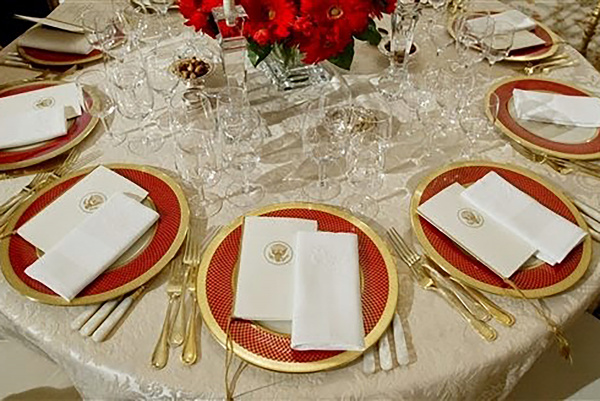
In 1988 Nancy Reagan commissioned SFERRA’s Irish linen dinner napkins hand-embroidered with the Presidential Seal. They became a hallmark of the iconic place settings at Reagan White House State Dinners.
In the 1990s SFERRA’s mission was to build on what Albert had started 20-some years earlier with luxury bed linens. After much exploration in the textile construction processes, an Italian-made extra-long staple cotton percale bedding called Celeste was born. Created with all-natural cotton, Celeste, with its soft and sleek touch and supple drape, became the company’s bestseller for the next 20 years.
SFERRA continued to innovate, and in 1998, two years after the debut of Celeste, the company challenged the Italian mill owners to develop a super-fine cotton yarn that could be used for a high-density thread count sateen. Two years of experimentation later, they finally had the right diameter, twist, and ply of the yarns, resulting in Milos and Millesimo, the first 1,020-thread count bed linens. It was a milestone for the industry. When the design was introduced in 2001, Departures magazine said, “They debuted … and turned the linens industry on its head.”
A slew of copycat bedding arrived on the market shortly after, but without the careful, heirloom craftsmanship of SFERRA. “When we introduced the first 1,020-thread count, many in the industry were trying to develop ways in which to achieve this feat at a lower price point,” says Susanne Martinez, vice president of product development at SFERRA. “However, the difference with SFERRA is the high quality of the raw materials we source. That soft feel in our fabrics is the beauty of the raw materials, not a finish that may wash off after the first launder.”
SFERRA Today
Coming off the success of the 1,020-thread count linens, SFERRA was more motivated than ever to create other fabrics and collections in unrivaled quality. The result was 2008’s Giza 45 designs.
Outside of luxury linens, particularly in men’s fashion circles, Giza 45 is known as “The Queen of Egyptian Cotton,” a rare commodity grown only in the Nile’s delta, of which the yarn is so fine, so long, and so delicate. The material is woven into a supple and soft linen with outstanding durability. “The DNA of SFERRA is about beautiful raw materials and the artisanal craftsmanship to create these incredible products,” says Michelle Klein, president and CEO. “Our mills are evolving with us, coming up with new products and materials, that’s where you’re seeing our innovation shine.”
- SFERRA expanded to offer luxury coverlets and quilts like this GELA Coverlet, woven of silk and cotton and then embroidered.
- SFERRA’s double-sided Doppio fringed linen dinner napkins have muted colors on one side and white on the reverse. They’re woven with 100% linen in a plain weave and finished with contrasting fringed edges.
Today SFERRA continues to sharpen and grow Gennaro’s legacy, expanding its influence around the world while pushing the boundaries of what home linens should be. “For me and the design team, we look to use the same beautiful materials but in a new way,” says Dean Tomihama, vice president of design.
“At the root of it, we’re a product-oriented company. That’s the most fun—seeing all the new products,” Michelle says. “I think Gennaro would be pleased and happy to see the steps we have taken to continue to have the best quality products in the world.”
LEARN MORE: HERE
This article originally appeared in the Spring/Summer 2020 issue of Sixtysix with the headline “Legacy of Luxury Linens.” Subscribe today.
PRODUCTION CREDITS
Produced by Studio Sixtysix
Words by Margaret Poe & Sophia Conforti
Photos courtesy of Sferra
Studio Sixtysix is the in-house creative agency to Sixtysix magazine. Studio Sixtysix stories are conceived, produced, and edited by Studio Sixtysix.
